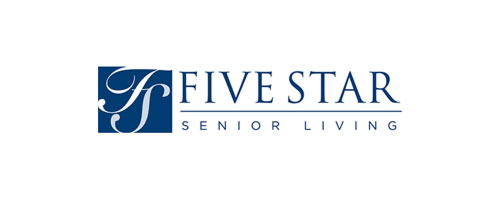Articles
The Journal on Active Aging brings articles of value to professionals dedicated to older-adult quality of life. Content sweeps across the active-aging landscape to focus on education and practice. Find articles of interest by searching the article archives in three ways: Enter a keyword in the articles search bar; click on search by topic; or type a keyword or phrase in the general search bar at the top of the page.

Inverness Village Wellness Center: creating a path to wellness for all
The Inverness Village life care community prides itself on providing an environment in which residents can embrace life and enjoy it fully. Located in Tulsa, Oklahoma, the not-for-profit community opened in 2003 to offer local adults ages 55-plus a new option—a senior living environment that supports active aging and incorporates the wellness model throughout the continuum of care.
To encourage active lifestyles for residents, the 190-acre Inverness Village campus includes walking and wheelchair paths, nature preserves, gardens, ponds, and outdoor recreation amenities. In addition, the Inverness Village Wellness Center offers an array of programs and amenities to promote resident health and well-being. “We provide programming for all levels of fitness, so residents can move in and out of all phases as their needs change,” notes Wellness Director Jana Headrick.
Innovator awards

Intergenerational programs promote active aging by Donna M. Butts, BA, and Kirnjeev Chana, BSW
Seven-year-old Ian is shown pictures of people of all generations. Friendly faces, unhappy faces, diverse faces. When asked who he could be friends with, he is as likely to point to a seven year-old as a 70 year-old. His mother reports he will run up to an older person in a wheelchair to say hello, not stare at them out of curiosity as some of his peers might. What has made Ian a boy for all ages? His family credits spending his early childhood in an intergenerational shared site that offers day care for young and old. Rather than artificially segregating people by age cohort, intergenerational programs offer an alternative view of a world that honors all ages and abilities.
moreTrends

Healthy employees=healthy care: collaborating to create a well community by Brenda Loube, MS, and Kelly McLean, MPA, BS
A frequent quote in the caregiving industry is, “To be a loving caregiver is perhaps the highest form of giving—but you must remember to first give care to yourself.” Caregivers are notorious for putting the health needs of those they care for above their own. Stressed, tired, and coping with a myriad of health issues, they put everything they have into making someone else’s life better, with little regard for their own health. Similar to parents on airplane flights, who are instructed to put on their own oxygen masks in an emergency before placing masks on their children, caregivers at older-adult residential communities must be directed to take care of themselves, so they can effectively help others. All the energy they invest in themselves will benefit everyone around them who needs their time and assistance. Conversely, neglecting their health will lead to the inability to provide adequate care for others.
moreMotivation

Creating effective tennis programs for adults over 50 by Anne Davis, MA
Remember the tennis boom of the 1970s and ’80s, when it seemed like everyone was playing the sport? Well, tennis appears to be experiencing a new surge in growth. According to the Sporting Goods Manufacturers Association, tennis is the only traditional participation sport in which participation grew from 2000 to 2005—a 10.3% increase. All other traditional sports declined in participation.
Are today’s Baby Boomers, who were part of the first tennis boom, contributing to this growth? A 2006 participation survey by the United States Tennis Association (USTA) and the Tennis Industry Association (TIA) shows that one in four frequent players is over age 50.2 (Frequent players are those who play tennis 21 or more times a year.) Why do these individuals play so much? Because tennis is fun, beneficial to health, and thanks to new technology, both easier to play and less stressful on the body. For these reasons, effective tennis programs can promote active aging, helping wellness-focused facilities and communities to attract and serve the age 50-plus adult.
Exercise

Arthritis: innovative, evidence-based programs get results by Marilynn Larkin, MA
If you’re working in an active adult community, continuing care retirement community (CCRC), health club or other facility geared to older adults, chances are most of your members have arthritis. And the numbers will only increase, according to a 2007 report from the US Centers for Disease Control and Prevention (CDC).
The number of arthritis patients in the United States will rise from about 46 million people today to 67 million in 2030, the CDC predicts. Of those nearly 70 million people, 25 million (37%) will limit usual activities due to arthritis. In Canada, the number of people with arthritis is expected to increase from four million today to more than six million by 2026.2 Similar increases—and limitations in function—will likely be seen in many developed countries around the world.
Arthritis

Travel by Leisure Care: enriching lives through the fun of adventure
Active aging is about people having the vitality to engage with the world and enjoy life fully in their later years. Travel offers a desirable outlet for doing both.
Research shows that the majority of Baby Boomers and older adults want to travel in retirement. The 2005 Del Webb Baby Boomer Survey, from developer Pulte Homes, finds that nearly two-thirds of adults ages 41–59 name this life-enriching activity as the thing they most want to do in retirement. Travel also tops the list of retirement activities for more than half of those ages 60–69.
































